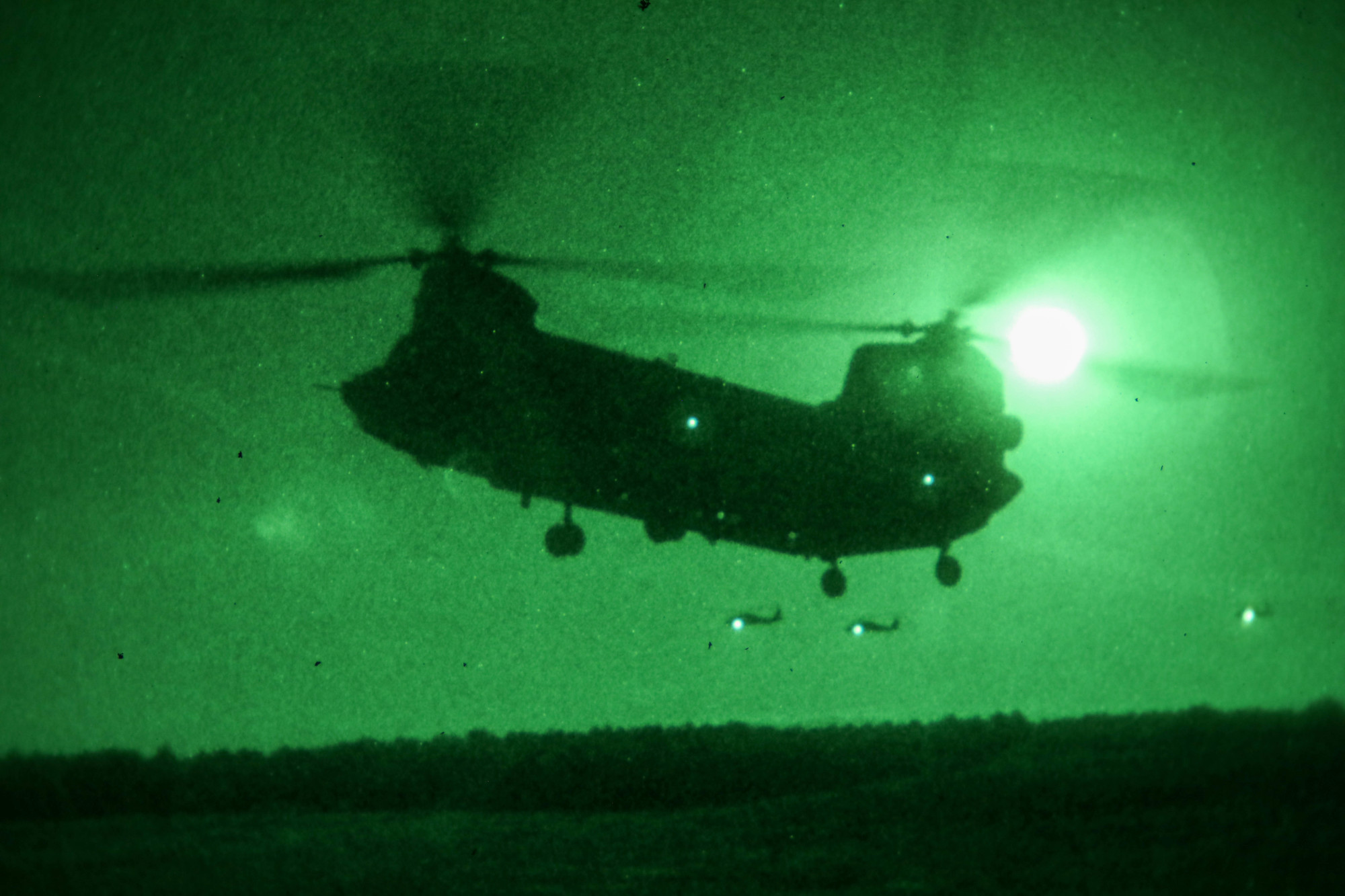

The US Army operates hundreds of large helicopters called Chinooks. The flying machine’s job is straightforward and unflashy: To transport people or equipment. But the Chinook fleet is not going anywhere right now, because the Army has grounded them. The problem leading to the grounding is a series of engine fires—there have been four reported fires over the past 90 days, according to an Army spokesperson.
The news of the vast grounding was reported earlier this week by The Wall Street Journal.
Here’s what to know about this unique military helicopter and why it was grounded.

The basics
“The Chinook is right now one-of-a-kind for the Army,” says Stacie Pettyjohn, who directs the defense program at the Center for a New American Security. “It’s the only heavy lift helicopter that it has.”
The CH-47 doesn’t look like a typical helicopter, either, thanks to its bus-like shape and two large, counter-spinning top rotors. The body of the aircraft is just over 50 feet long and, when the rotors are spinning, the flying machine’s total length is about 100 feet, according to a Boeing factsheet. It can hold more than 30 passengers.
“For the Army, it provides it with mobility, and an ability to transport needed equipment or troops to different locations,” she adds. “This is really important in operations such as Afghanistan, where you’re in this really mountainous terrain that doesn’t have a particularly good road network.”
While versions of the Chinook have flown for decades, currently, two different variants are in service, notes Mark Cancian, a retired colonel in the Marine Corps and a senior advisor at the Center for Strategic and International Studies. The CH-47F is the base model, and the MH-47G is intended for special operations.
That “G” variant features “fancy additional capabilities,” Cancian says. “The big one is that the avionics are more sophisticated—it allows much more complex navigation, [and] I think it allows it to fly closer to the ground.”
Regardless, experts describe the aircraft as a workhorse. It’s “not flashy,” Cancian notes. Flying in one, he says, is very loud, and passengers sit along the sides. “You’re in mesh seats, facing each other,” he says. “It’s just so noisy, you can’t talk.”
Other Army helicopters include the Apache and the Black Hawk. Meanwhile, as part of a larger program called Future Vertical Lift, two companies, Sikorsky and Bell, are competing to produce both a new armed reconnaissance helicopter (see the candidates here and here) and a new Black-Hawk-type assault aircraft (here’s option one and option two).

The grounding
The issue behind the fires and subsequent grounding is believed to stem from an O-ring, which is like a gasket, in some engines. “All CH-47 helicopters are currently undergoing inspection to determine if the O-rings are defective,” says Army spokesperson Jason Waggoner, via email. (A separate Army statement from Army spokesperson Cynthia Smith notes that “no deaths or injuries occurred” as a result of the “small number of engine fires.”)
Those O-rings are in T55 engines made by Honeywell. In a statement, the company said: “Honeywell helped discover that O-rings not meeting Honeywell design specifications had been installed in some T55 engines during routine and scheduled maintenance at an Army Depot. It is believed these suspect O-Rings have been identified and isolated.”
Waggoner notes that the Army cannot say how long the grounding will last. “Based on the results of our investigation some aircraft may not require corrective measures and may soon return to normal flight operations,” he says.
In total, he says, the Army has more than 400 of these helicopters, but the Journal quotes a figure of “more than 70 aircraft” that could be specifically affected out of the larger fleet.
The takeaway
Experts characterized a grounding like this one as a major event, even if it’s not unprecedented. “I wish I could say it’s rare,” says Todd Harrison, the head of research at Meta Aerospace. “It’s unusual, to be sure, but it usually means that there’s a serious safety issue that they’re concerned about.”
But the grounding of a fleet that includes more than 400 of the same type of aircraft is a reminder of a vulnerability that accompanies a trend in military aviation, Harrison says. “If you look at our broad inventory of aircraft—rotary wing and fixed wing, across the military—not only has it been getting smaller, we’ve been narrowing down different types of aircraft fleets into a smaller and smaller number of types.”
While having larger numbers of the same types of aircraft can come with economical benefits, the strategy comes with a weakness in the form of many eggs in one basket.
“What that means is since you’re flying a lot of the same hardware—same engine, same airframe, things like that—that when you find some sort of a critical vulnerability, a safety issue, and you have to ground that fleet,” Harrison observes, “you’re now grounding a much greater percentage of your overall force.”
Correction on Sept. 3: This article has been updated to refer to the special operations variant of the Chinook as the MH-47G, not the CH-47G.